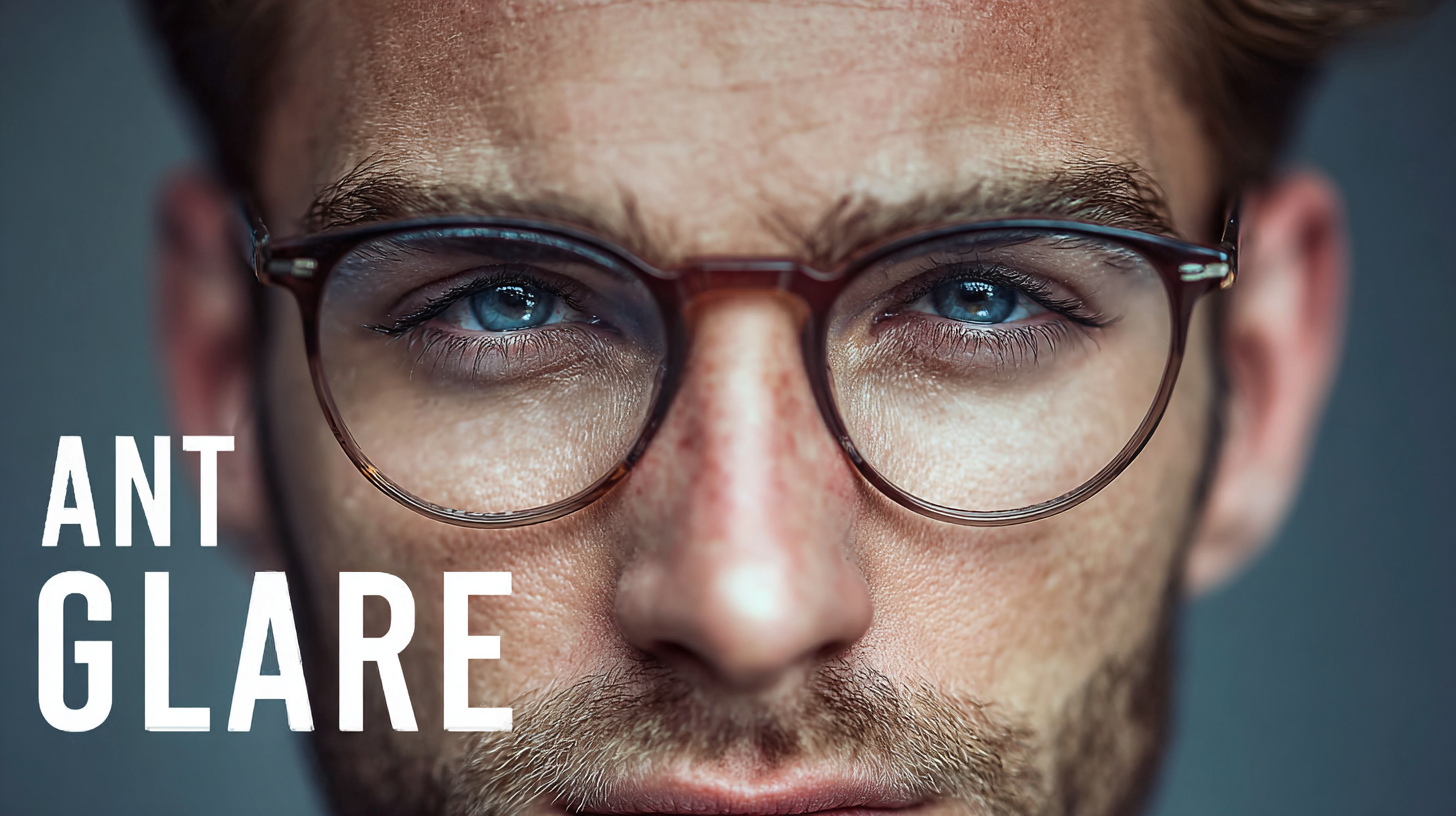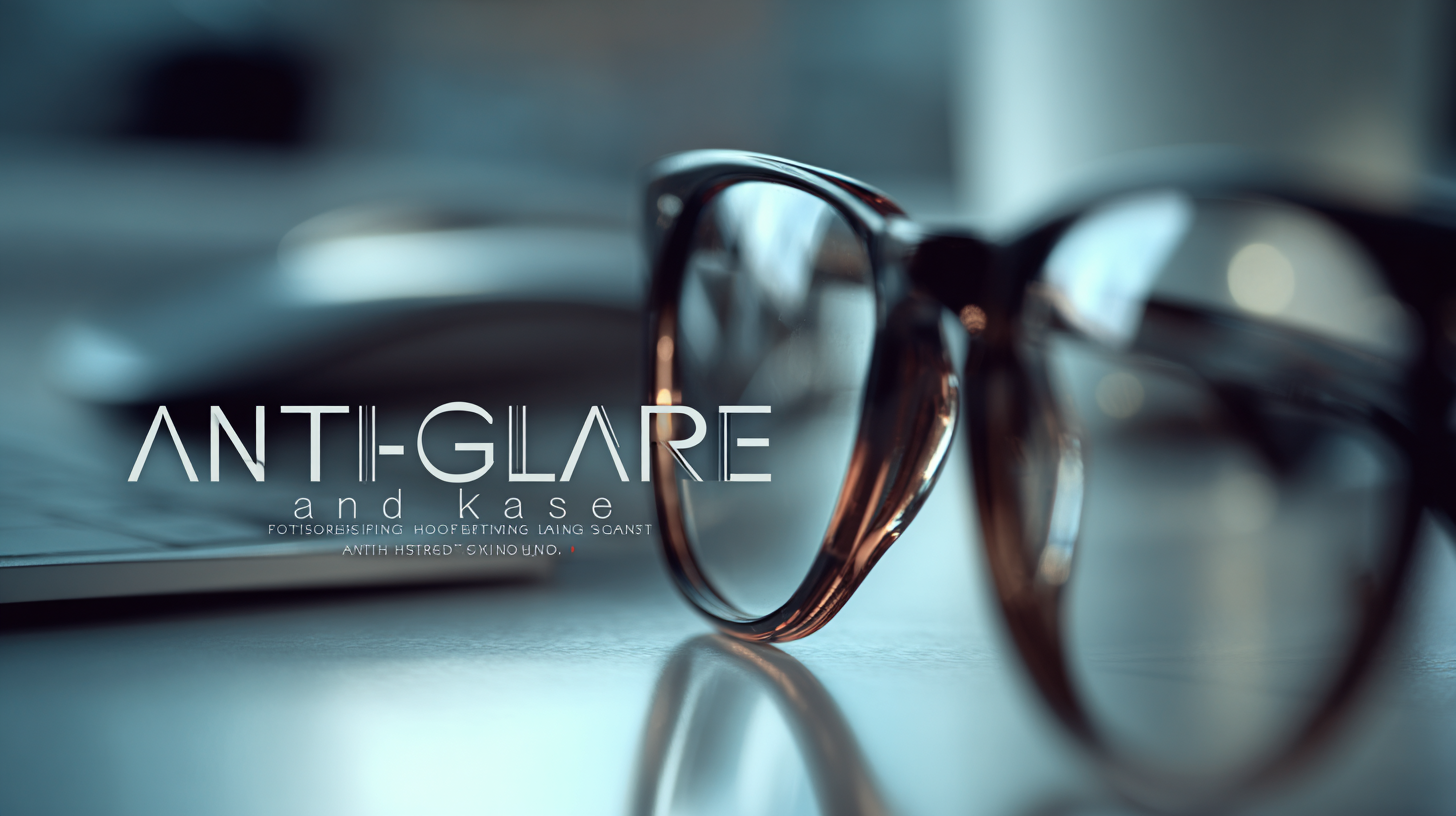In today's competitive
eyewear market, sourcing the best
Anti Glare Lenses is essential for businesses aiming to enhance customer satisfaction and differentiate themselves from rivals.
 These lenses not only provide superior visual clarity by reducing reflections and glare, but they also play a crucial role in improving overall comfort and performance for wearers, especially in environments with bright lighting.
As a business owner, understanding the advantages of offering high-quality Anti Glare Lenses can significantly impact your sales and reputation.
This blog will explore the key factors to consider when sourcing these lenses, emphasizing the importance of
after-sales service and
maintenance costs, while also providing a "how-to" guide for successfully integrating Anti Glare Lenses into your product offerings.
With the right strategies, you can ensure that your customers receive the optimal visual experience, leading to increased loyalty and profits for your business.
These lenses not only provide superior visual clarity by reducing reflections and glare, but they also play a crucial role in improving overall comfort and performance for wearers, especially in environments with bright lighting.
As a business owner, understanding the advantages of offering high-quality Anti Glare Lenses can significantly impact your sales and reputation.
This blog will explore the key factors to consider when sourcing these lenses, emphasizing the importance of
after-sales service and
maintenance costs, while also providing a "how-to" guide for successfully integrating Anti Glare Lenses into your product offerings.
With the right strategies, you can ensure that your customers receive the optimal visual experience, leading to increased loyalty and profits for your business.
When sourcing anti-glare lenses for your business, it’s crucial to identify the key features that distinguish quality options. One significant aspect to consider is the lens coating technology. High-quality anti-glare lenses typically feature multiple coatings that reduce reflections without compromising clarity. Look for lenses that utilize advanced anti-reflective coatings, as these can greatly enhance visibility and reduce eye strain for prolonged use.
Another important feature to examine is the durability of the lenses. Quality anti-glare lenses should be scratch-resistant and capable of withstanding everyday wear and tear. This ensures that the lenses maintain their effectiveness over time. Always check product specifications and reviews to gauge the longevity and quality of the lenses before making a purchase.
**Tips:** When assessing potential suppliers, ask for samples to evaluate the lens performance in real-world conditions. Additionally, consider the lens tint and its impact on color perception and comfort, particularly for jobs requiring precise visual accuracy. Consulting with experts or manufacturers can also provide insights tailored to your specific business needs.
When it comes to selecting the best anti-glare lenses for your business needs, understanding the different types of anti-glare coatings and their benefits is crucial. Anti-glare coatings can significantly enhance visual comfort by reducing reflections and glare from screens and light sources, making them ideal for environments where prolonged screen time is common. For instance, AR (Anti-Reflective) coatings improve clarity and can increase productivity by allowing for a clearer view of digital displays, which is especially beneficial in settings like offices, research labs, and design studios.

Moreover, advancements in materials science, such as biomimetic coatings inspired by the lotus leaf, have introduced innovative solutions that can be applied to anti-glare lenses. These new coatings not only provide effective glare reduction but also possess self-cleaning properties due to their unique surface structure, which can repel dirt and moisture. Such features can save maintenance time and cost, maximizing the usability of lenses in practical applications. By exploring these various options, businesses can find anti-glare lenses that not only meet their visual needs but also enhance efficiency and maintenance.
When sourcing anti-glare lenses for your business, evaluating supplier options is crucial to ensuring quality and cost-effectiveness. According to a recent report by Grand View Research, the global anti-reflective coating market was valued at approximately $3.8 billion in 2022 and is projected to grow at a compound annual growth rate (CAGR) of 8.7% from 2023 to 2030. This growth underscores the need for businesses to not only consider price but also the technology and craftsmanship behind these lenses.

To effectively compare suppliers, start by assessing their product offerings and technological advancements. Suppliers utilizing advanced coatings, such as those that enhance durability and scratch resistance, often yield superior performance. A report by Transparency Market Research highlighted that lenses with multi-layer coatings can reduce glare by up to 95%, making them significantly more effective than conventional options. Additionally, checking for certifications and customer reviews can provide insights into product reliability and supplier credibility, ensuring that your business gets the best value and performance from the chosen anti-glare lenses.
When sourcing anti-glare lenses for business needs, understanding the importance of testing and certification is paramount. Ensuring that these lenses not only meet basic visual requirements but also adhere to safety standards can greatly affect the quality of service provided to customers. According to industry research, approximately 30% of users experience discomfort or vision problems due to inadequate lens quality, underscoring the necessity for rigorous testing and certification.
Clinical studies have shown that optical products, including anti-glare lenses, should pass specific tests to determine their efficacy in filtering out harmful light rays and reducing glare. Certified lenses have demonstrated a 50% reduction in glare compared to non-certified options, which significantly enhances user satisfaction. Furthermore, organizations like the American National Standards Institute (ANSI) provide guidelines for testing optical devices, ensuring that certified lenses offer both quality and safety for end users. The emphasis on thorough evaluation will not only boost customer trust but also foster long-term business success in a competitive market.
| Lens Type | Testing Standards | Certification Required | Key Features | Suitable Applications |
|---|---|---|---|---|
| Polarized Lenses | ISO 12312-1 | Yes | UV Protection, Glare Reduction | Outdoor Activities, Sports |
| Photochromic Lenses | ANSI Z80.3 | Yes | Adaptive Tinting, UV Protection | Everyday Use, Driving |
| Blue Light Blocking Lenses | FDA Approved Standards | Yes | Reduces Eye Strain, Enhances Contrast | Digital Device Use, Office Work |
| Anti-Reflective Lenses | ISO 12312-1 | Optional | Reduces Reflections, Improves Clarity | Everyday Use, Night Driving |
| Mirror Coated Lenses | ASTM F803 | Yes | High Reflectivity, Stylish Appearance | Fashion, Outdoor Sports |
When considering anti-glare lenses for your business needs, effective budgeting is crucial to optimize costs without compromising quality.
According to a report by the Vision Council, the global anti-reflective lens market is projected to reach USD 7.68 billion by 2026, highlighting a growing demand for these products. As businesses aim to enhance employee comfort and productivity, investing in cost-effective anti-glare solutions becomes a strategic necessity.
One approach to budgeting effectively is considering bulk purchasing options, which can lead to significant savings. Research indicates that businesses that purchase lenses in larger quantities can reduce costs by up to 20%, as manufacturers often provide discounts for bulk orders. Additionally, exploring various suppliers can lead to competitive pricing, further aiding in budget management. Choosing the right vendor who understands your specific requirements and offers a range of anti-glare solutions can make a notable difference in both your budget and the quality of lenses acquired.

